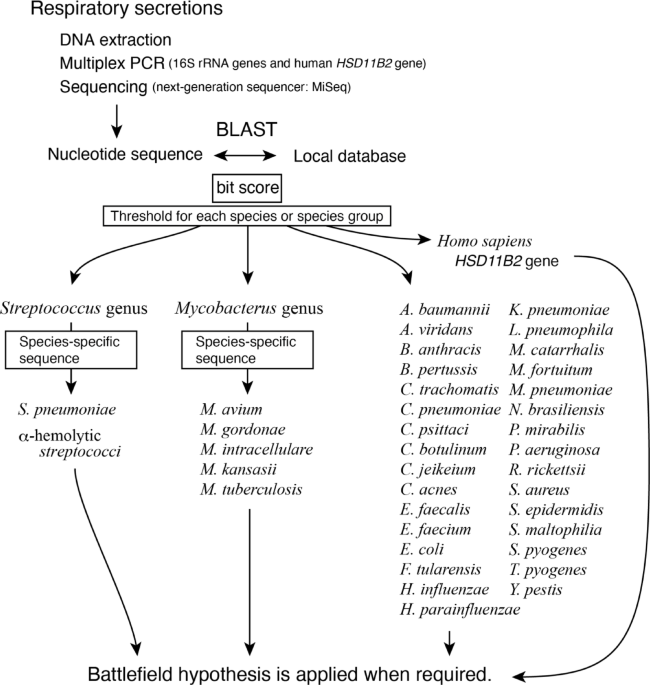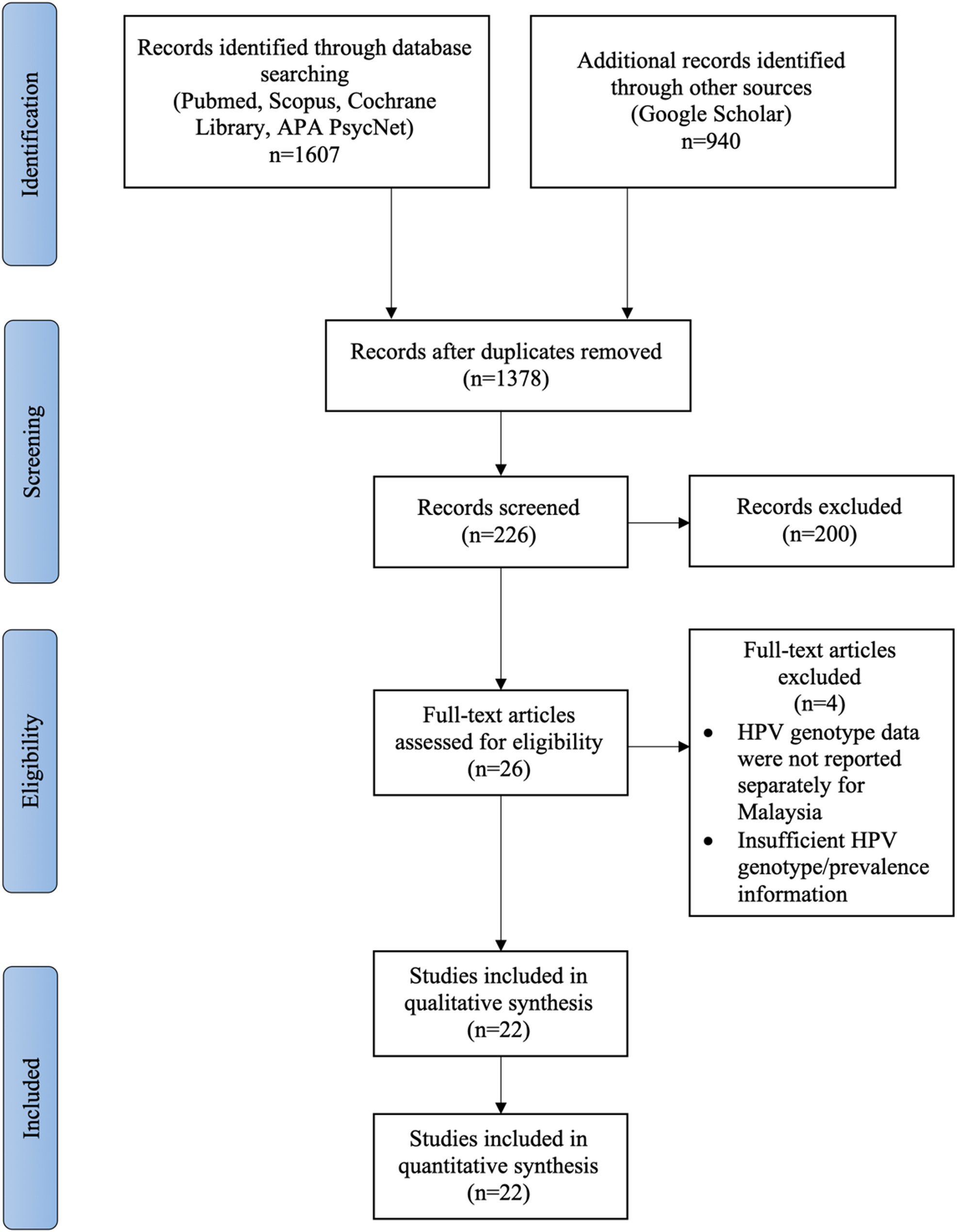
Health warning labels on cigarettes have helped educate consumers on the risks of smoking. President Lyndon B. Johnson signed the Federal Cigarette Labeling and Advertising Act of 1965 into law. Encouraged by the 1964 Surgeon General’s Report, which linked tobacco use to lung cancer and other serious illnesses, this mandated that cigarette manufacturers include the message, “CAUTION: Cigarette Smoking May Be Hazardous to Your Health,” on any cigarette packages produced starting on January 1, 1966. In 2009, the Family Smoking Prevention and Tobacco Control Act expanded the cigarette labeling requirements to include graphic health warnings. Intending to educate the public about the hazards of smoking, cigarette warning labels have proven effective, particularly if they are large, graphic, and comprehensive.
This past January, the US Surgeon General’s Advisory recommended that alcoholic beverages start including warning labels indicating the cancer risk associated with alcohol consumption. Recently, the Journal of the American Medical Association (JAMA) published an Insight article summarizing the evidence supporting this recommendation.
The risk of cancers affecting the mouth, throat, voice box, breast, colorectum, and liver increases with alcohol consumption. Alcohol consumption contributes to an estimated 4% of global cancer cases, and the majority (>76%) of these cases occur in men. Within the United States, alcohol stands as the third most modifiable cancer risk factor. Only smoking and obesity contribute to more cancer cases than alcohol.
The risk of developing an alcohol-related cancer increases relative to the amount of alcohol consumption. However, a notable limitation to understanding an accurate dose dependency of alcohol on cancer risk arises from a lack of standardization in defining quantities of alcohol consumption.
Dietary recommendations for alcohol consumption in the United States include a maximum of one drink a day for women and two drinks a day for men. Other factors that can increase cancer risk in individuals who drink include smoking, a family history of alcohol-related cancer, or liver disease.
Policies that promote education about the risks of alcohol consumption on the development of certain cancers. In addition, screening patients for alcohol use disorder (AUD) could help identify those who could benefit from treatment protocols that could decrease cancer risks.
Sources: Tob Control, JAMA, Br J Cancer, Lancet Oncol, CA Cancer J Clin, Br J Cancer
GUANGZHOU, Aug. 10 (Xinhua) — Chinese scientists have achieved a breakthrough in preventing mosquito-borne diseases by developing an intelligent vector mosquito surveillance system that offers scientific guidance for disease control.
Developed by a team led by Chen Xiaoguang, a professor at Southern Medical University, this monitoring technology has been deployed across multiple communities in south China’s Guangdong Province.
Accurate surveillance proves vital since diseases like chikungunya primarily spread through Aedes mosquito bites.
However, traditional methods for monitoring mosquitoes face limitations. “Mosquito traps and mosquito nets only monitor non-blood-fed mosquitoes, while mosquito oviposition traps target blood-fed egg-laying mosquitoes,” Chen explained.
“Our innovation employs coordinated dual-device operation for real-time, high-efficiency monitoring,” Chen said.
Automated monitors use human-mimicking attractants to capture non-blood-fed mosquitoes, while smart oviposition buckets utilize container-type miniature water pools to monitor blood-fed gravid Aedes albopictus mosquitoes, achieving four times the efficiency of conventional oviposition traps, he added.
Field tests demonstrated remarkable effectiveness. During its first operational week, the system issued timely alerts for abnormal mosquito density surges across multiple zones and generated targeted intervention protocols.
“Manual mosquito trapping caused data delays. Now, real-time cloud-based alerts have substantially accelerated grassroots disinfection responses,” Chen said. After deployment, surveillance showed nearly a 40 percent decrease in adult mosquito captures within key areas.
Currently implemented across multiple sites in Guangdong’s Foshan City, this technology represents a significant advancement. “Our team is striving to accelerate mosquito-borne disease prevention through technological innovation,” Chen said. ■

BLAST (blastn and makeblastdb version 2.8.1+) was downloaded from the NCBI website https://blast.ncbi.nlm.nih.gov/doc/blast-help/downloadblastdata.html. It was then stored in the /blast_directory/bin directory created on the local computer. Clustal Omega was downloaded from the Clustal Omega website http://www.clustal.org/omega/#Download. Ruby was downloaded from the Ruby website https://www.ruby-lang.org/en/downloads/. They were installed as instructed in each web site.
The 16 S rRNA nucleotide sequences were obtained from the nucleotide database in GenBank. In GenBank, many 16 S rRNA entries have only partial sequences registered. To obtain full-length sequences, we first searched GenBank using queries that included the bacterial name and the word “complete” in the title, and “16S” anywhere in the entry. We then extracted the 16 S rRNA regions from GenBank records in which the FEATURE field was annotated as rRNA with the product labeled “16S ribosomal RNA.” These steps were repeated, and we retrieved up to the first 1000 sequences. For M. gordonae, which had only a small number of entries, we used sequences derived from whole genome sequencing data along with all GenBank rRNA entries for M. gordonae that were longer than 1400 bp. In summary, we obtained a total of 20,309 copies of the 16 S rRNA from 41 species of bacteria.
The 16 S rRNA sequences that belong to a bacterial species were aligned using Clustal Omega to obtain the consensus sequence for that species. Subsequently, the consensus sequences for all bacterial species were aligned using Clustal Omega. We designed PCR primers based on the aligned sequences.
The match between either of the PCR primers and the 16 S rRNA sequence was measured using the Levenshtein distance. A Levenshtein distance of 0 indicates a perfect match, 1 indicates a single mismatch, and 2 or more indicates a mismatch of 2 or more bases.
The sequences flanked by PCR primers from the consensus sequences of each bacterial species were collected and used to create a local database of pneumonia-causing bacteria. In addition, we also registered the consensus sequences of four α-hemolytic streptococci (S. mitis, S. oralis, S. salivarius, and S. sanguinis) to differentiate S. pneumoniae from them, and the sequence of the human HSD11B2 gene for the battlefield hypothesis. The specificity of the S. pneumoniae-specific nucleotide sequence was further confirmed in six additional species of α-hemolytic streptococci (S. anginosus, S. constellatus, S. gordonii, S. intermedius, S. parasanguinis, and S. vestibularis).
The genomic DNA of Escherichia coli (12713G), Pseudomonas aeruginosa (106052G), and Klebsiella pneumoniae subsp. pneumoniae (14940G) were purchased from the Biological Resource Center, NITE (Chiba, Japan). The genomic DNA of Staphylococcus aureus subsp. aureus Rosenbach ATCC 700699D-5, Streptococcus pneumoniae (Klein) Chester ATCC BAA-255D-5, Moraxella catarrhalis (Frosch and Kolle) Bovre ATCC 25240D-5, Haemophilus influenzae (Lehmann and Neumann) Winslow et al. ATCC 51907D, Proteus mirabilis Hauser ATCC 12453D, Acinetobacter baumannii ATCC BAA-1605D-5, and Mycobacterium tuberculosis (Zopf) Lehmann and Neumann ATCC 27294D-2, were purchased from the American Type Culture Collection (Rockville, MD, USA). Human placental genomic DNA was purchased from Promega Corp. (Madison, WI, USA).
Two sets of primer mixes that simultaneously amplify 16S rRNAs and human HSD11B2 gene were prepared. The test solution was divided into two portions, PCR-amplified with both primer mixes, and then combined. Each reaction contained a primer mix (250 nM each), 1× PrimeSTAR GXL Buffer (Takara Bio Inc., Kyoto, Japan), 200 nM dNTPs, and 0.625 U PrimeSTAR GXL DNA Polymerase in a final volume of 25 µL. The cycling parameters were 94 °C for 120 s, followed by 30 cycles of 94 °C for 10 s, 55 °C for 15 s, and 68 °C for 35 s. The amplified products were purified using the Agencourt AMPure XP system (Beckman Coulter, CA, USA), and the nucleotide sequences were determined as described in a previous report (Inoue, Shiihara et al. 2017) using the MiSeq Reagent Kit V3 (Illumina). In that report, a second PCR was performed with primers that included an adapter sequence for loading onto the MiSeq, followed by a third PCR with indexed primers to distinguish multiple samples.
Cheryblast + ob (check sequence query with BLAST + for bacteria: Deposited in https://doi.org/10.5281/zenodo.14759736) is a wrapper program for BLAST that we developed, incorporating a novel algorithm of our own design. It uses BLAST for the nucleotide homology analysis. The FASTQ files output from the MiSeq were analysed using Cheryblast + ob. Each read was classified into 37 types of pneumonia-causing bacteria 16 S rRNA, 4 α-hemolytic streptococci 16S rRNAs, the human HSD11B2 gene, or sequences that did not match any of these categories.
To investigate the impact of sequencing errors on the classification of 16 S rRNA, we introduced mutations at rates ranging from 0 bp/500 bp to 5 bp/500 bp into the 16S rRNA sequences downloaded from GenBank. We then identified bacterial species using Cheryblast + ob. This process was repeated 100 times to calculate the average sensitivity and specificity for the identification of bacterial species.
A two-fold dilution series of genomic DNA was created, starting with 65,000 copies of DNA derived from A. baumannii, E. coli, H. influenzae, K. pneumoniae, M. tuberculosis, M. catarrhalis, P. aeruginosa, P. mirabilis, S. aureus, S. pneumoniae, or human DNA. We set 65,000 copies as the target and used 32,500 copies, 16,250 copies, 8,125 copies, 4,063 copies, and 2,032 copies as competitors. Samples were prepared by arbitrarily selecting and mixing one target and one competitor of 32,500 copies, one competitor of 16,250 copies, and so on. These samples were then amplified using the PCR primers set in this study, sequenced with MiSeq, and analysed with Cheryblast + ob.

Falls can kill, not just dramatic plunges but also seemingly minor slips – particularly among older adults. A friend recently texted that he lost his 90-year-old father to a fall at home. Another’s 89-year-old mother-in-law required stitches after a fall and never fully recovered. The incidence of falls in people over 65 is around 28 percent.
Dr Shobha N, neurologist and stroke physician at Manipal Hospital in Bengaluru, cites several causes of falls in older adults: impaired vision or hearing, decreased muscle mass, diminished foot sensation, slowed reflexes and altered gait. Underlying conditions like diabetes, cardiac issues, postural hypotension and incontinence all increase fall risk. Some medications and vitamin deficiencies contribute too. Environmental hazards—slippery floors, poor lighting, loose rugs—are added risks.
While some falls are inevitable, many are preventable with improved balance. Fitness experts advise that training should begin early rather than post 50. Saurabh Bothra, yoga instructor and co-founder of Habuild, an online wellness platform, stresses that balance training is a preventive tool, not a late-life remedy. “Like most aspects of health, you can’t suddenly ‘catch up’ later,” he says. “Incorporating balance exercises alongside cardio and strength training from your early decades ensures that your body and brain remain resilient as you age.”
The adage “use it or lose it” applies here. In her book, Better Balance for Life, published in 2018, Carol Clements writes: “Balance is a skill. It gets better with practice and deteriorates without it.” The book includes a 10-week stability programme, recommending everyday tasks like standing on one foot while brushing teeth or walking an imaginary tightrope while on the phone.
Dance is another effective way to train balance. Jayachandra Pallazhy, founder and artistic director of the Attakkalari Centre for Movement Arts, says balance and agility are the by-products of dancing. “All forms of dancing engage the pectoral muscles, which support posture and help improve balance,” he notes. Dancing combines auditory (music), visual (movement), and kinesthetic (body awareness) inputs, which engages multiple brain regions simultaneously. “When you move you connect it with your breath, almost like painting or sculpting with your breath. With dance you understand the alignment of your body and it propels itself.” In addition, dancing enhances mental and physical coordination.
Mind-body disciplines such as yoga and tai chi similarly strengthen balance. In tai chi, intentional meditative movement activates the brain while training the body. A controlled trial found that a therapeutic tai ji quan programme was more effective than stretching or multimodal exercises in reducing serious falls in older adults. Zi, a 70-year-old tai chi instructor in Philadelphia, teaches a senior class in a public park each morning. “Holding on to our dan tien—the body’s energy centre—is key,” she says. One recommended pose is the Golden Rooster Stands: lift one knee while raising the same-side arm and hold for a few seconds before switching sides.
Yoga, too, offers asanas that improve balance. “Balance is fundamentally a neurological process,” says Bothra. “It also reflects leg strength and coordination, essential for preventing falls.” Poses such as Vrikshasana (Tree Pose), Garudasana (Eagle), Ardha Chandrasana (Half Moon), and Tadasana (Mountain) are safe for older practitioners if done near a wall or with support. Bengaluru-based Shubha Rao, 70, has practised yoga since her thirties. “I continue to do balance asanas and teach other seniors in my apartment building. It helps with stability and confidence,” she says.
Yet, even with preventive steps, falling is at times inevitable for anyone. This is where learning how to fall becomes crucial. Skateboarders, for instance, practise falling almost as much as riding. “The first thing you teach yourself is how to fall safely,” says Bobby, 29, a skateboarder practising since he was 10-years-old. In judo, knowing how to land without injury is essential. The Dutch Judo Federation launched ZekerBewegen (feeling safe in movement) in 2015, a fall-prevention programme for seniors. It teaches techniques for falling safely while seated and standing by tucking the chin to minimize injury to head and spine and rolling to distribute impact. “When we teach swimming to prevent drowning,” asks Rao, “why can’t we teach falling to prevent injury?”
Dr Shobha N suggests some simple screening tools to assess the risk of falls.
Tug Test: In this screening tool, a patient is asked to get up from a chair and walk at a normal pace for 3 meters, turn around, walk and sit back in the chair. If this takes more than 13.5 seconds then, the person is at a risk of fall.
Gait Speed: If the gait speed is less than 0.8m/s, then the person is at a risk.
2. Vision and hearing should be corrected with glasses or hearing aids.
3. Just 20 minutes of daily exercise can enhance muscle mass and joint flexibility. Stair climbing and strength training help slow osteoporosis.
4. Staying hydrated and getting sufficient sleep reduce the risk of tumbles.
5. Vitamin D and B12 supplementation may aid balance, while avoiding alcohol and sedatives is crucial. Managing blood pressure, adjusting anti-epileptic medications and correcting electrolyte imbalances all support fall prevention.
6. Practical measures—such as walking slowly, keeping hands free for support, and using canes or walkers when needed—can make a significant difference. If a fall occurs, it’s vital to stay calm and rise slowly with support.
7. Ultimately, addressing both internal and external risk factors—and learning how to fall safely—can prevent serious head, neck and spinal injuries that often compromise an older adult’s independence.
Jayanthi Madhukar is a Bengaluru-based writer.

Malaysia has a multi-ethnic population, and HPV prevalence varies across different races and regions. The country faces a crucial challenge in reducing HPV infections due to limited data. This systematic review provides a comprehensive overview of HPV genotype prevalence in cervicovaginal samples across Malaysia, based on 22 studies from both Peninsular and East Malaysia. The findings highlight a consistently high prevalence of high-risk HPV (hrHPV) types, particularly HPV16 and HPV18, which are the two genotypes most commonly associated with cervical cancer globally. Other frequently detected hrHPV genotypes include HPV52, HPV58, HPV33, and HPV45, which were found across various population groups and regions. These trends are consistent with previous studies in Asia and globally [16,17,18].
HPV infection was more commonly found in women aged 30 years and above, accounting for 75.8% of reported cases [16, 19,20,21,22,23]. This trend likely reflects persistent infection acquired earlier in life, combined with the fact that these cohorts were not eligible for the Malaysia’s school-based HPV immunization program, which was introduced in 2010 and targets 13-year-old girls. The publication window beginning in 2000 therefore includes women largely unvaccinated at the time of data collection. Although awareness of HPV has historically been low, modest improvements have been observed in recent years [24]. Among the general population, HPV prevalence ranged from 4.4 to 46.7%, whereas in women with abnormal smears or cervical cancer, prevalence ranged from 27.2 to 100%.
In cytologically normal samples, HPV detection was notably high (47.6%), similar to trends seen in Thailand (72.9%) [25]. Among cytological abnormalities, HPV was most prevalent in LSIL (22.9%), followed by atypical squamous or glandular cells (8.6%), and HSIL (5.7%). In cervical cancer specimens, HPV infection was found in 67.4% of SCC cases, 19.8% in ADC, and 0.7% in atypical squamous cells (ASC). HPV16 emerged as the most frequently detected genotype across all lesion grades, followed by HPV18, 58, 52, and 33, though distribution varied by lesion severity, ethnicity, and region [17, 22, 26, 27].
Overall, high-risk HPV types accounted for 97.7% of cases, while low-risk types made up 2.3%. Notably, the genotype distribution varied across regions. In West Malaysia, HPV16 and HPV18 were the most prevalent types. In East Malaysia, HPV52 and HPV58 were predominant in Sarawak, while HPV56 and HPV70 were more frequently observed in Sabah. Interestingly, HPV70 was more common in East Malaysia compared to the West, aligning with broader regional trends noted by Peng et al. (2012) and supporting the idea of geographic variation in genotype distribution across East and Southeast Asia [18].
This review further emphasizes variation in HPV genotype distribution among different ethnic groups. Among Malaysians, HPV prevalence was highest among Malays (61.2%), followed by Chinese (22.0%) and Indians (12.0%). In East Malaysia, specific Indigenous populations, such as the Kadazan-Dusun, Iban, and Bidayuh, also showed evidence of HPV infection, though sample sizes were limited. The distribution of genotypes also varied: HPV58, HPV52, and HPV56 were more common among Malays; HPV33, 52, and 45/58 among Chinese; and HPV51, 45, and 58 among Indians. Although research on ethnic disparities in HPV prevalence is limited in Malaysia, these findings are consistent with international data showing variation across ethnic groups. For example, HPV positivity was highest among non-Hispanic Blacks and lowest among Mexican-born Hispanic Whites in the U.S [28].
Given that HPV is responsible for over 95% of cervical cancer cases globally, these findings reinforce the critical importance of early detection and prevention [29]. Vaccination remains the most effective primary prevention method. While the bivalent vaccine provides nearly complete protection against HPV16 and 18 [3, 30, 31], the broader protection offered by the 9-valent vaccine (covering HPV31, 33, 45, 52, and 58) is particularly relevant to the Malaysian context [32]. This review found that, in addition to HPV16 and 18, high-risk types such as HPV52, 58, and 33 were frequently detected, especially in East Malaysia and among certain ethnic groups. These genotypes are included in the nonvalent vaccine, suggesting that broader adoption of this vaccine could enhance protection in regions and population where non-16/18 types are more prevalent. For instance, HPV52 and 58 were predominant in Sarawak, while HPV33 was more frequently found among Chinese women. Aligning vaccine strategy with these distribution patterns could strengthen national prevention efforts and help reduce regional and ethnic disparities in cervical cancer outcomes. Nevertheless, gaps in vaccine coverage and public access persist, especially in rural areas and among underrepresented populations [3, 33].
These findings support the ongoing need for regionally tailored HPV prevention strategies in Malaysia. This includes expanding surveillance, enhancing access to the nonavalent HPV vaccine, and integrating education and outreach programs to address persistent disparities in screening and vaccination uptake.
This systematic review provides valuable insights for revising Malaysia’s current vaccination strategies and HPV-based screening programs. The inclusion of studies from diverse settings and populations provides a broader understanding of HPV genotype distribution across the country. However, certain limitations should be considered when interpreting the findings. First, the predominance of studies from West Malaysia restricts a comprehensive assessment of HPV genotype distribution nationwide. Second, variations in HPV genotyping methods and differences in study participant selection may contribute to inconsistencies in the reported data. Finally, the possibility of participant overlap across studies especially those using national or institutional databases. Due to limited reporting in the original studies, we could not fully verify the independence of all samples, which may introduce some duplication bias.

The researchers used the policy change as a natural laboratory of sorts to study the effect of shingles vaccination on long-term health outcomes. In a statistically sophisticated analysis of health records, the team found that the vaccine reduced the probability of getting dementia by one-fifth over a seven-year period. This means that people who received the shingles vaccine were less likely to develop clinical dementia over the seven-year follow-up period, and women benefited more than men.
The study design allowed researchers to compare two groups without actively depriving any one group of access to vaccination. The two groups were also of comparable age and had similar medical comorbidities – meaning similar rates of other medical conditions such as diabetes or high blood pressure.
Results from this and other related studies raise the possibility that vaccines may have a broader role in experimental therapeutics outside the realm of infectious diseases. These studies also raise provocative questions about how vaccines work and how our immune system can potentially prevent dementia.
How vaccines might be protective
One scientific explanation for the reduction of dementia by the herpes zoster vaccine could be the direct protection against the shingles virus, which may play a role in exacerbating dementia.
However, there is also the possibility that the vaccine may have conferred protection by activating the immune system and providing “trained immunity,” in which the immune system is strengthened by repeated exposure to vaccines or viruses.
The study did not differentiate between different types of dementia, such as dementia due to Alzheimer’s disease or dementia due to stroke. Additionally, researchers cannot draw any definitive conclusions about possible mechanisms for how the vaccines could be protective from an analysis of health records alone.
The next step would be a prospective, randomized, double-blind, placebo-controlled study – the “gold standard” for clinical trials in medicine – to directly examine how the herpes zoster vaccine compares with a placebo in their ability to reduce the risk of dementia over time. Such studies are necessary before any vaccines, as well as other potential therapies, can be recommended for routine clinical use in the prevention of dementia.
The challenges of untangling dementia
Dementia is a major noncommunicable disease that is a leading cause of death around the world. A January 2025 study provided updated figures on lifetime dementia risk across different subsets of the US population.
The researchers estimate that the lifetime risk of dementia after age 55 is 42% – more than double earlier estimates. The dementia risk was 4% by age 75, and 20% by age 85, with the majority of risk occurring after 85.
The researchers projected that the number of new cases of dementia in the US would double over the next four decades from approximately 514,000 cases in 2020 to 1 million in 2060.
Once considered a disease largely confined to the developed world, the deleterious effects of dementia are now apparent throughout the globe, as life expectancy increases in many formerly developing countries. While there are different forms of dementia with varying clinical manifestations and underlying neurobiology, Alzheimer’s disease is the most common.

Both Salvador Dalí and Thomas Edison are said to have used dreams to stoke their creative process. To spark new ideas, the men would let themselves drift off to sleep for just a few moments, and then wake up and note the dreamlike visions they had on the brink of unconsciousness.
But you may have heard that dreams happen only in a stage called rapid-eye-movement (REM) sleep. So is it possible to dream during other stages of sleep, as Dali and Edison supposedly did??
Although dreams in different sleep stages can take on different forms, REM sleep is definitely not the only time we dream, experts told Live Science.
“The belief that dreams are only associated with REM sleep comes from people who are not familiar with the subject in detail, or who have somewhat outdated knowledge,” Isabelle Arnulf, a sleep neurologist at Sorbonne University in Paris, told Live Science in an email.
When REM sleep was first described in the 1950s, it had a couple of easily observable characteristics that prompted scientists to link the sleep stage to dreams. REM sleep, which makes up about 25% of our total time asleep, is characterized by brain waves that resemble electrical activity during wakefulness, fast eye movements and full-body paralysis. Scientists theorized that these rapid eye movements reflected people “watching” their dreams and that the body was paralyzed to prevent them from acting out those dreams in real life. While these theories about REM sleep still hold, scientists now know that these outward physical characteristics aren’t necessarily required for dreams to take place.
It is true that when people are awoken during REM sleep, they often report remembering vivid dreams with a strong narrative thread. But since the discovery of REM sleep, further research has shown that people dream during non-REM (NREM) sleep, too.
Related: What happens in your brain while you sleep?
In one study, Arnulf used a drug to suppress REM sleep in a small group of participants and then regularly woke them up throughout the night to see if they’d had any dreams. Many participants reported remembering dream-like mental content upon waking up, even though they had never entered REM sleep. Based on their reports, the structure and content of those dreams was a little different, though.
“NREM dreams are less frequent, shorter, less vivid, more conceptual or thought-like, and often lack a clear narrative,” Francesca Siclari, a sleep researcher at the Netherlands Institute for Neuroscience, told Live Science in an email. “In contrast, REM dreams are almost always story-like, vivid, and rich in sensory detail. That said, there’s a lot of variability. Sometimes NREM dreams are very minimal in content, and other times they can be remarkably similar to REM dreams.”
Siclari has used electroencephalography (EEG) — a technique that measures electrical activity in the brain — to learn more about dreams during different sleep stages. She’s found that both REM and non-REM dreams share some similarities in EEG signatures, even though REM and non-REM sleep stages generally look quite different on an EEG scan. She also discovered that when people’s brain activity is slower, they’re less likely to report a dream when woken up.
Although these results shed light on the mechanics behind dreaming in REM and non-REM sleep, many questions remain. Scientists still don’t understand exactly how the brain generates dreams, why we have such a hard time remembering them, and why we even dream at all. They hope if they can learn more about dreams — and the different sleep stages in which they occur — it could reveal deeper truths about how the human brain works.
“[Dreaming is] much more frequent and varied than most people realize — we typically remember only a tiny fraction of our dreams,” Siclari said. “Studying them gives us a unique perspective on how the mind works when it’s decoupled from the outside world.”

Weight loss and diabetes drugs on the market often do not achieve long-term weight loss for patients. GLP-1 drugs target brain neurons that control appetite but frequently cause side effects. Nausea and vomiting force 70% of patients to stop treatment within a year. Syracuse University chemistry professor Robert Doyle is leading a multidisciplinary team that has identified a different brain target for treating obesity and diabetes, potentially offering weight loss without gastrointestinal distress.
Neurons are the most well-known and obvious target in research and drug development for brain conditions. GLP-1 drugs, for example, target brain neurons in the hindbrain involved in appetite control. But researchers are looking beyond neurons to study “support” cells such as glia and astrocytes that could aid appetite reduction.
A collaborative research effort has revealed that support cells play a role in reducing feelings of hunger, although this process has not been studied in-depth.
“We wanted to know whether support cells might produce new peptides or new signaling molecules that might be critical in body weight reduction,” says Doyle, a medicinal chemist and the Jack and Laura H. Milton Professor of Chemistry in the College of Arts and Sciences at Syracuse University. Doyle is also a professor of pharmacology and medicine at SUNY Upstate Medical University.
How it works
Think of each brain neuron as a light bulb and support cells as the components that allow the light bulb to brighten, including the wiring, switch and filament.
“All of those supporting parts beyond the light bulb play a role in making the light shine,” says Doyle.
The research team discovered that some support cells in the hindbrain naturally produce a molecule named octadecaneuropeptide (ODN), which suppresses appetite. In lab tests, injecting ODN directly into rats’ brains made them lose weight and improved how they processed glucose.
However, injecting directly into the brain isn’t a practical treatment for people, so researchers created a new version of the molecule named tridecaneuropeptide (TDN). This molecule version could be given to human patients through regular injections akin to today’s Ozempic or Zepbound. When tested in obese mice and musk shrews, TDN helped the animals lose weight and respond better to insulin without causing nausea or vomiting.
Marathon shortcut
One goal of the research team is to produce weight loss without aiming new therapeutic molecules at neurons. The new TDN molecule bypasses neurons, taking a shortcut to directly target neurons’ downstream support cells, which researchers found also produce appetite suppression. TDN cuts short the “marathon” of chemical reactions and negative side-effects caused by GLP-1 drugs.
“Instead of running a marathon from the very beginning like current drugs do, our targeting downstream pathways in support cells is like starting the race halfway through, reducing the unpleasant side effects many people experience,” says Doyle. “If we could hit that downstream process directly, then potentially we wouldn’t have to use GLP-1 drugs with their side effects. Or we could reduce their dose, improving the toleration of these drugs. We could trigger weight loss signals that happen later in the pathway more directly.”
A new company called CoronationBio has been launched to turn this discovery into a real-world treatment. The company has licensed intellectual property related to ODN derivatives for the treatment of obesity and cardio-metabolic disease from Syracuse University and the University of Pennsylvania, with a focus on translating candidates into the clinic. They’re now teaming up with other companies to develop this treatment and aim to start human trials in 2026 or 2027.